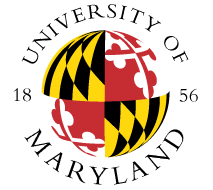My practicum took place at Dr. John Fisher’s Tissue Engineering and Biomaterials Laboratory, part of the Fischell Department of Bioengineering at the University of Maryland. This lab focuses on building biological models of human tissues for applications in regenerative medicine and disease modeling. I had been interested in tissue engineering after attending a seminar on the topic, so I researched labs on campus that were doing related work, and after some research I found Dr. Fisher’s lab. I filled out the undergraduate interest form on their website, and sure enough I was accepted to start working there during the summer of 2024.
This certainly was not the only lab I applied to, and wasn’t even the only research interest I was looking into. I had cold emailed upwards of 15 principal investigators of labs both on and off campus, and had never heard back from any of them. My advice to future SGC Scholars trying to find a lab on campus would simply be not to give up. You need to be persistent, and maybe even annoying, because that’s the only way anyone will ever notice you. Eventually something will work out eventually, and someone will be willing to give you a chance, it’s just a matter of time and maybe a bit of luck.
My project specifically is titled “Evaluating the Impact of Extracellular Matrix Composition on BeWo Gene Expression.” My research group’s overall goal is to develop a 3D bioprinted placenta model to study gestational diabetes, and in order to do that we need to identify the best environment for the cells to grow. That’s where my project comes in; essentially what I am doing is analyzing different formulations of the environment and testing which one produces the most realistic results.
To do this, I first needed to culture the BeWo cells under different conditions. This means that I had to maintain sterile techniques and carefully monitor the cells as they grew. After the specific conditions had been met, I then had to isolate the RNA by breaking open the cell membranes and separating the other cellular contents. The studies I am running require cDNA and not RNA, so I then performed reverse transcription on the purified RNA to synthesize cDNA. Finally, with the cDNA I could run qRT-PCR experiments, allowing me to analyze the expression of our genes of interest, and compare the results to those of an actual human placenta.
Through this experience, I gained a much deeper understanding of how scientific knowledge is actually generated. In most academic settings, we’re taught science through lectures and textbooks, so it was interesting to actually work in a laboratory environment and make my own discoveries. Scientifically, I learned a great deal about the logistics and challenges involved in tissue engineering, especially through working with sensitive cell lines like BeWo cells. Due to the nature of my project, I developed a stronger understanding of placental structure and function, and how diseases such as gestational diabetes alter the maternal-fetal interface. I also improved my sterile technique and gained more hands-on experience in wet lab skills such as RNA isolation, cDNA synthesis, and qRT-PCR. Lastly, I was able to practice my ability to read scientific papers, as well as interpret my own data that I obtained from my experiments.
This experience gave me a much greater appreciation for how scientific research connects to broader societal issues. Our project aims to create a more accurate model of the placenta to study gestational diabetes, a condition that affects many pregnancies but still isn’t fully understood. I feel very fortunate that I have been able to have even a small role in researching this disease and potentially finding a cause or better treatment. Seeing how basic research could eventually lead to such a significant real-world impact was pretty inspiring.
This experience also helped me clarify my career goals. While I genuinely enjoy working in a lab and found the hands-on work engaging, I’ve realized that I likely don’t want to go into a career in academia. While I value research and find it enjoyable, I don’t necessarily want it to be the sole focus of my career long-term. Additionally, although tissue engineering is fascinating, I’m not convinced it’s the area I want to specialize in, so this experience has encouraged me to explore other disciplines within bioengineering as well.


